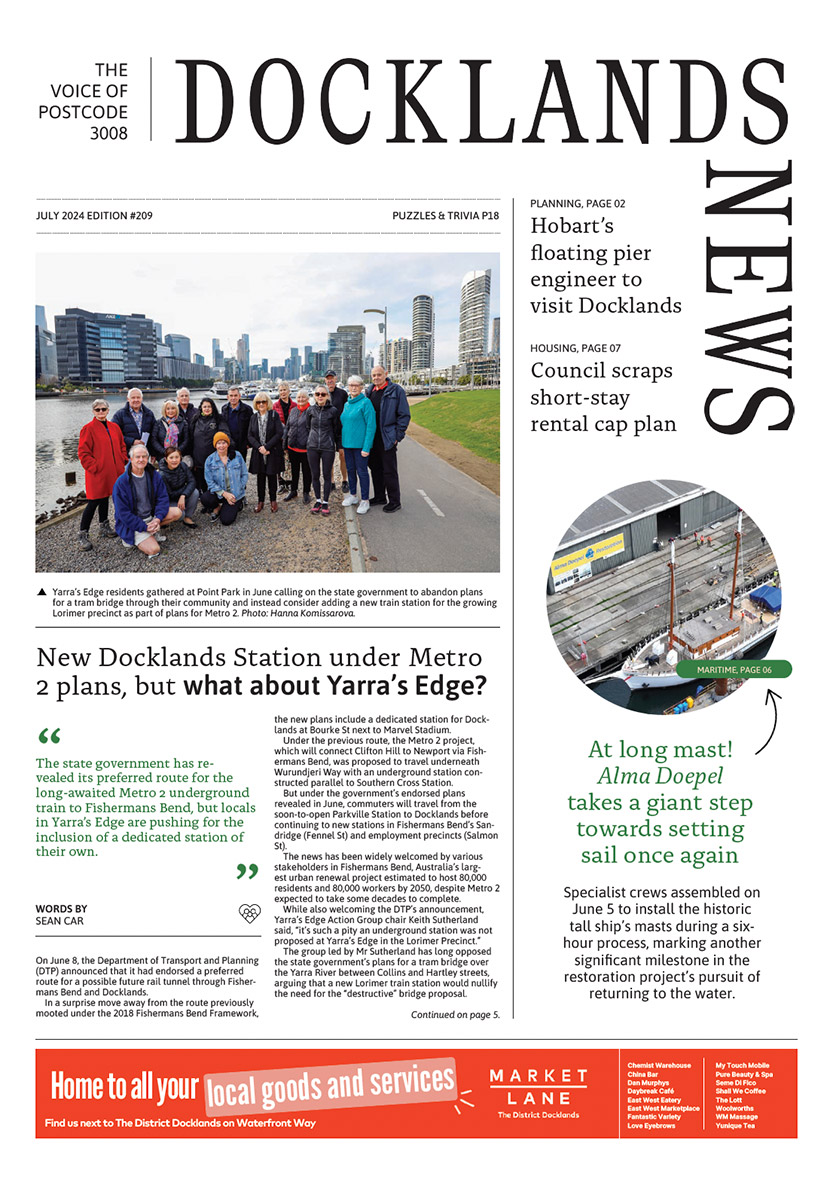A return to the sea shanty
By Jackie Watts - Chair, Melbourne Maritime Heritage Network
Just when we thought “it safe to go back into the water” so to speak, and that the pandemic tide had ebbed enabling a return to near normality, this month we saw yet another lockdown! Lockdown itself seems to have triggered another unfathomable phenomenon - the extraordinary popularity of the sea shanty.
This historical maritime musical genre has been around for 600 years and became popularised in the 18th century with the advent of very long sea voyages such as those to Australia. These rousing rhythmic songs helped with tasks where seafarers needed to work in rhythm, e.g., when lifting sails or hauling cargo via ropes. No doubt in times gone by sea shanties would often have been heard around docks. Perhaps the chant or chorus created a sense of common purpose among those working. In a sense, lockdown has a quality akin to a long “voyage” (in this case, through the pandemic) and it seems that isolation heightens an appreciation of collective endeavour, which might in part account for the current popularity of shanties during COVID.
Alert: between 12pm and 3pm on Sunday, April 18, Melbourne Maritime Heritage Network (MMHN), in collaboration with the Navy Band, will host a performance at the stage at Federation Square with the promise that a sea shanty or two will feature! See theguardian.com/music/2021/jan/13/not-just-for-drunken-sailors-how-sea-shanties-took-over-tiktok and
theage.com.au/culture/music/why-are-sea-shanties-suddenly-all-over-social-media-20210119-p56v7h.html
Docklands residents need no reminder that waterways have been and are significant to Melbourne’s evolution as a city and much maritime heritage is irrevocably tied to its river system. A new exhibition entitled Yarra: Stories of Melbourne’s River, is now on at Melbourne’s Old Treasury Building, Spring St. The Yarra, once known as Birrurung: River of Mists, meanders through urban reaches past Docklands. The placid river belies a turbulent, teeming and often tragic past. The river and swamps sustained the Woi Wurrung, Wurundjeri and Boon Wurrung peoples but also of course, the river’s fresh water both attracted and sustained European presence. Early cultural contact took place along the banks of the river. As the colonial European population grew, the river’s sweet water became degraded and its abundant swamplands were drastically re-configured to tame the periodic flooding when the river became a swollen roaring torrent, breaking its banks, demolishing wharves, threatening factories and homes in low-lying areas. After the last “great flood” disaster in 1891, the river was changed forever. Its course was straightened, shortened and deepened into a “channel” running through the city. The Coode Canal and Victoria Port (now known as Victoria Harbour) were excavated. In 2017 ground breaking legislation determined the right of the Wurundjeri peoples to help manage the waterways – ensuring that an earlier pre-European sense of Birrarung is sustained into the future.
For Docklands residents (young or not-so-young) looking for an inexpensive, informative and compelling maritime hobby to be enjoyed from dry land – and one that is especially rewarding for Dockland residents – MMHN encourages you to consider ship-spotting. It is a form of “collecting”, identifying, perhaps photographing and recording, the many types of ships that power into our Docklands. Shipping is, after all, critical to our economy. And why are container ships so especially fascinating? Because production is globalised, the vast bulk of all products are conveyed to us in containers by sea through Docklands. Global trading means products often make multiple journeys – in containers. Shipping logistics and complex supply chains underpin the world economies and impact on the environment. There are instruction guides to assist identification. For more information email [email protected]. The World Shipping Society (WSS) meets monthly at the Port Education Centre, Lorimer St, Fishermans Bend.
Continuing the “spotting” theme, Docklands residents are likely to “spot” flags flying on vessels around the waterways. Flags are the means of information exchange (i.e. signalling) between ships and from ship to shore. Pre-dating modern information technologies, flags remain in use and retain considerable fascination among maritime heritage enthusiasts. There are many conventions relating to the “language” of flags and like many conventions, they change over time. For example, in the first half of the 20th century, the Red Ensign had widespread use in Australia. It is the same as the Blue Ensign, which became the Australian National Flag after 1901 following Federation. At the same time, the Red Ensign became the flag of Merchant Naval Shipping and has remained so ever since. Flags signalling disease aboard vessels or contagion also changed over time from yellow to chequered yellow and black. How many, and what colour flags can you see flying in Docklands? •

Neighbourhood Watch and RACV launch apartment crime prevention program








 Download the Latest Edition
Download the Latest Edition